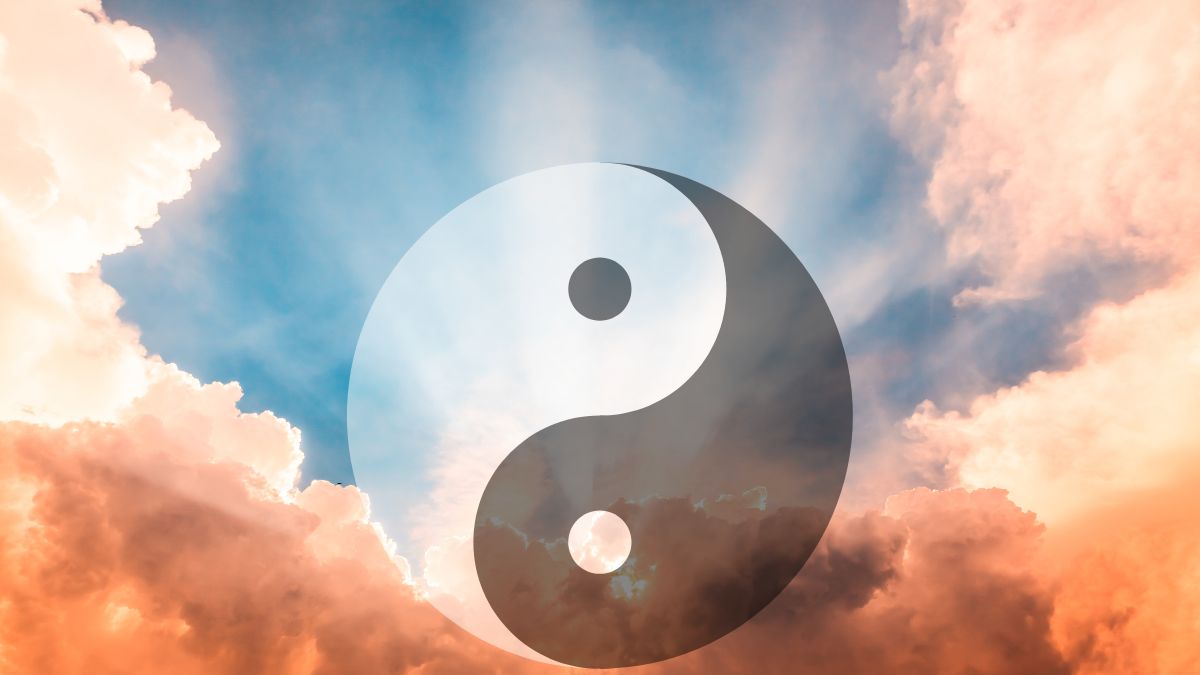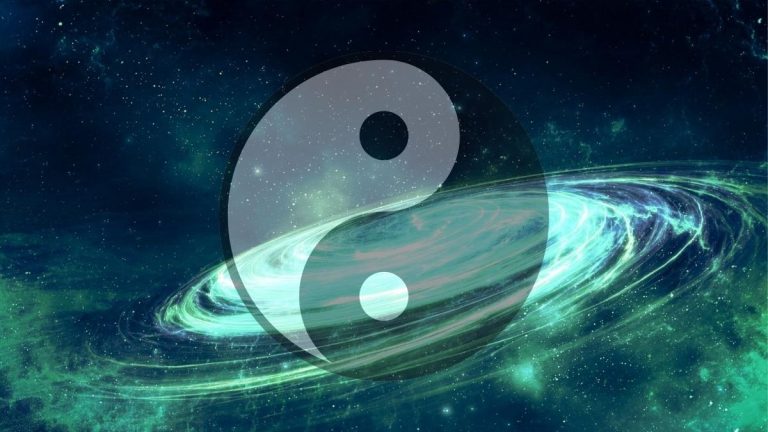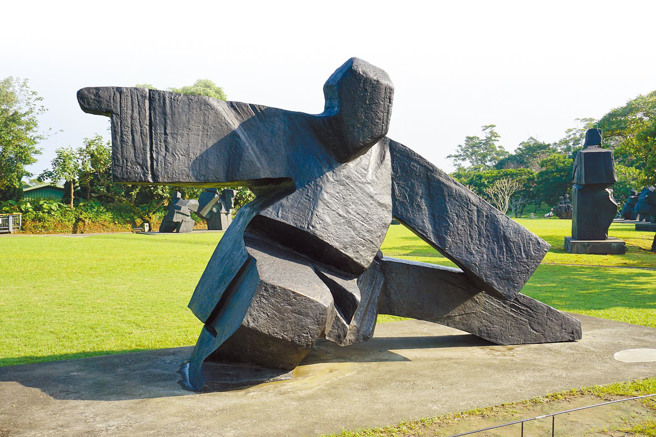The Five Sacred Principles of Yin-Yang
Remember that black and white embracing circle from our first article? You’ve already discovered the basic dance of Yin-Yang— not a battle between good and evil, but complementary partners creating life’s beautiful rhythm. Now let’s dive deeper into the mystery of how these forces actually work.
The ancient Chinese text I Ching (Book of Changes) teaches us: “One Yin, one Yang—this is the Way.” This means Yin-Yang embodies the fundamental truth of everything in the universe. But what truths do they actually contain? Through millennia of observing heaven and earth, and our modern deep experience of life, we’ve discovered five core principles: Opposition, Interdependence, Waxing & Waning, Infinite Layers, and Transformation.
These principles don’t just explain how nature works—they offer profound guidance for navigating your own life’s changes, challenges, and growth.
First Principle: Yin-Yang Opposition
What is Yin-Yang Opposition?
In the Taiji symbol, black represents Yin and white represents Yang. The circle itself represents the universe, and Yin-Yang are the two fundamental substances—or phenomena—that compose everything. You can also think of them as two types of energy or life force.
The basic understanding of Yin-Yang begins with simple dualism: Yin and Yang are opposites. It’s precisely through this opposition that each discovers the other’s existence and meaning.
Opposition in the Natural World
Heaven and Earth: Heaven is Yang—vast, empty space with light air rising upward. Earth is Yin—solid matter, heavy and settling downward.
Day and Night: Daylight’s brightness is Yang; nighttime’s darkness is Yin.
Mountain and Water: Mountains are still and unmoving (Yin); water flows and dances with life (Yang).
Mind and Body: Our consciousness and spirit are Yang; our physical body is Yin.
These represent material forms of Yin-Yang opposition. But there are also abstract oppositions: good and evil, freedom and restriction, action and stillness.
Why Opposition Creates Life
Here’s the beautiful truth: opposition creates dynamic tension, and from this tension comes innovation, growth, and new possibilities. After Yin and Yang clash and interact, they naturally settle into new forms of balance. This isn’t destructive conflict—it’s creative collaboration.
Think about it: without problems (Yin), there would be no solutions (Yang). Without questions, no discoveries. Without challenges, no growth. Opposition isn’t something to avoid—it’s the very mechanism through which life renews and evolves itself.
Second Principle: Yin-Yang Interdependence
The Sacred Dots
Look closely at the Taiji symbol: within the white Yang section lives a black dot, and within the black Yin section lives a white dot. A tiny black seed hides within the largest white area, while the largest black area also contains a small white seed.
This reveals Yin-Yang theory’s most profound insight: when opposition reaches its extreme, it naturally contains the seed of its opposite. When Yin or Yang reaches its peak, it actually gives the opposing force an opportunity to develop.
“Solitary Yin Cannot Give Birth, Isolated Yang Cannot Grow”
This famous Daoist saying captures a fundamental truth: if the universe contained only a single phenomenon or energy—no conflict, no interaction—nothing would ever change. The universe would be lifeless and static.
There’s no pure creation without foundation. Even the most brilliant idea (Yang) needs a material vehicle (Yin) to express itself. Even the most fertile soil (Yin) needs sunlight (Yang) to spark life.
Interdependence in Nature and Life
The Miracle of New Life: This is interdependence at its most direct and magical. New life emerges from the fusion and combination of two different energies—neither can create alone. It perfectly illustrates “interdependence” as the source of all creation.
Your Breath as Teacher: Every breath demonstrates this principle. Inhalation (Yang) and exhalation (Yin) form one complete cycle. Without thorough exhalation, you cannot take a deep inhalation. Without full inhalation, you cannot powerfully exhale. Each defines and enables the other.
Relationships as Energy Exchange: In healthy relationships, giving (Yang) and receiving (Yin) flow naturally between people. Someone who only gives eventually becomes exhausted and resentful. Someone who only receives finds their relationships gradually depleting. True nourishment happens in the natural flow between both.
Nature does not pursue purity or permanence. Instead, it weaves opposites together, generating life through tension, renewal through collapse.
This principle invites us to reflect: what if the very thing we resist contains the key to our growth? What if the darkness we fear carries the seed of awakening?
True harmony is not found by escaping opposition—but by seeing how deeply the opposites depend on one another to become whole.
Third Principle: Yin-Yang Waxing & Waning – Life’s Natural Rhythm
The Seasonal Textbook
The most intuitive teacher of Yin-Yang waxing and waning is the grand rhythm of seasonal cycles:
Spring Equinox → Summer Solstice: Yang energy continuously grows (days lengthen, temperatures rise) while Yin energy gradually diminishes.
Summer Solstice → Autumn Equinox: Yang energy reaches its peak then gradually weakens, while Yin energy begins growing (nights lengthen, temperatures cool).
Autumn Equinox → Winter Solstice: Yin energy continuously grows while Yang energy diminishes.
Winter Solstice → Spring Equinox: Yin energy reaches its peak then gradually weakens as Yang energy awakens again.
Key observation: Though summer solstice is hottest, “one Yin is born.” Though winter solstice is coldest, “one Yang awakens.” Extreme points are turning points.
Cycles, Not Linear Progress
The essence of Yin-Yang waxing and waning reveals a dynamic universe governed by eternal fluctuation and cycles, where “when things reach their extreme, they reverse.” This principle shows that extreme states inherently contain seeds of their own transformation—as Yang peaks, Yin arises, and vice versa—explaining turning points in history, destiny, and emotion. By highlighting cyclical rhythms rather than linear progress, it challenges modern pursuits of infinite growth, suggesting true sustainability lies in aligning with natural cycles. Ultimately, meaning emerges not from static endpoints but from wholehearted participation in the continuous rise and fall of energies, fostering awareness and growth within this flow.
For us, this means recognizing that times of intensity (Yang) will naturally give way to rest (Yin), and that stillness is not stagnation but preparation. It also challenges modern illusions of constant growth and relentless productivity.
To live wisely is to know the seasons within ourselves—to act when it is time to act, and to withdraw when it is time to rest. This rhythm is not a flaw in life. It is its music.
Fourth Principle: Yin-Yang Infinite Layers
The Nested Reality
Yin-Yang possesses the characteristics of layering, stacking, and containing. The I Ching‘s expression of Yin-Yang began with just one solid line and one broken line representing Yang and Yin. The stacking of Yin-Yang forms the eight trigrams; the stacking of trigrams forms the 64 hexagrams, used to understand complex phenomena.
Conversely, we can break down any complex phenomenon to discover its essential Yin-Yang nature.
The Taiji symbol’s Yin-Yang shape expresses not only cyclical flow, but also the truth of nested layers—Yin within Yang, Yang within Yin, layers upon layers of embedding.
You Are a Living Universe
Taiji literally means reaching outward to infinity and inward to the ultimate essence. The great Taiji contains countless small Taijis. In Taiji philosophy, every thing and every life is itself a Taiji—therefore, humans are naturally small Taijis.
Your body is an exquisite holographic reflection, perfectly embodying the universe’s Yin-Yang laws. The operation of our bodies, emotions, and consciousness represents a miniature display of cosmic operating principles. We ourselves are small universes containing Yin-Yang dynamic balance—complete in ourselves, yet also part of a greater whole.
The Human Microcosm
Spirit and Body: Human spirit is Yang—rising, always seeking to elevate and transcend. Human body is Yin—material and physical, giving us appetites and instinctual needs for food and intimacy. This creates the inner tension we all feel between spiritual and material aspects of our nature.
Connected to the Greater Pattern: Though human spirit and body seem to form their own complete system, as part of the universe we must harmonize with the greater Taiji. For example, our circadian rhythms naturally align with sunrise and sunset—directly corresponding to the universe’s Yin-Yang waxing and waning.
The Web of Relationship
When viewing the world through Yin-Yang layers, we’re not isolated individuals but participants in a dynamic, nested network of relationships. Our individual existence hasn’t separated from the greater Self—we’re connected to it.
This recognition naturally gives birth to reverence and gratitude toward all things, while also knowing our unique and significant (not small) place in existence.
We realize: taking good care of this “small Taiji” (ourselves) is our greatest contribution to the “great Taiji” (universe). Respecting and maintaining the great Taiji’s harmony is also our deepest nourishment. This is the most simple yet most profound understanding of the Chinese concept “heaven-human unity.”
Fifth Principle: Yin-Yang Transformation
The Path of Inner Alchemy and Harmonizing with the Universe
At the deepest level of Yin-Yang philosophy lies the potential for transformation—not just change, but a complete shift in how we relate to ourselves and the cosmos.
In Daoist thought, this process is called “inner alchemy.” It’s the art of refining both body and spirit, not to escape the world, but to resonate more fully with the natural rhythms of the universe.
Body and Spirit: Two Energies in Dialogue
Yin represents the physical body—dense, grounded, and receptive. It’s the vessel through which we experience life: our breath, our blood, our instincts.
Yang represents the spirit—light, expansive, and seeking to rise. It carries our awareness, our aspirations, our desire to transcend.
Rather than seeing body and spirit as in conflict, Daoism invites us to recognize them as two aspects of one energy system, always seeking balance.
When these two forces are aligned, something remarkable happens: we begin to transform.
Two Paths of Energy Flow
In everyday life, most people experience Yin and Yang flowing downward—toward physical desire, reproduction, survival. This is not wrong; it’s part of life. But if we turn our awareness inward and upward—through breath, stillness, and intention—the energy begins to ascend. It nourishes clarity, wisdom, and a higher state of consciousness.
This is the essence of spiritual cultivation in Daoism. It’s not about denying the body, but about purifying both body and mind so that they can reflect their original harmony.
- Through movement and breathwork (similar to yoga or qigong), we cleanse the body, releasing stagnation and heaviness.
- Through meditation and inner silence, we purify the spirit, letting go of emotional noise and limited thought patterns.
In time, this refinement leads us back to the origin—the pure state where Yin and Yang first emerged in unity.
Becoming a Resonant Being
Daoist texts speak of a figure called the Zhenren, or “True Person”—not a saint or guru, but someone who lives in complete harmony with the Tao, the Way of nature.
This ideal isn’t about perfection. It’s about becoming so deeply attuned to the rhythms of life that your very presence becomes a reflection of balance.
From this perspective, we are not isolated beings. Each of us is a microcosm—a small universe with the same Yin-Yang dynamics as the stars, the seasons, and the tides.
To care for ourselves—mind, breath, body—is to care for the cosmos. And to walk in harmony with the Tao is to return to who we truly are.
The Wisdom Path Forward
Mastering these five principles doesn’t make life perfect—it makes you more skillful at dancing with life’s imperfections. You learn that balance isn’t a static state but a dynamic art. True harmony isn’t the absence of opposites but the conscious collaboration with them.
This is the gift of Yin-Yang wisdom: not control over life’s changes, but the ability to move with them gracefully, finding opportunity in challenge, connection in opposition, and continuous transformation in the midst of whatever circumstances arise.
You don’t need to become someone completely different. You need to become more fully yourself—integrated, aware, and alive to the magnificent Yin-Yang dance that is your unique life expression.





